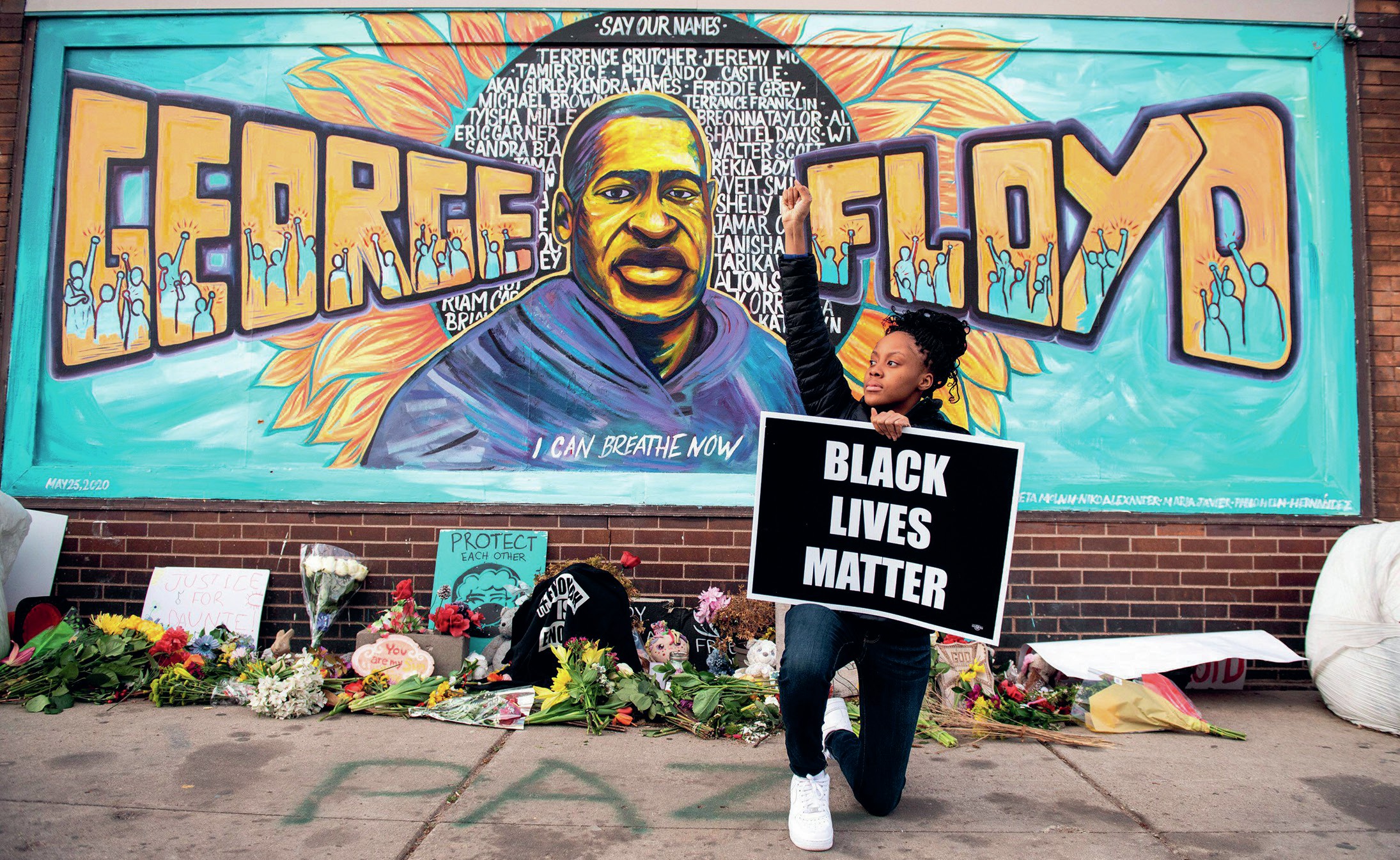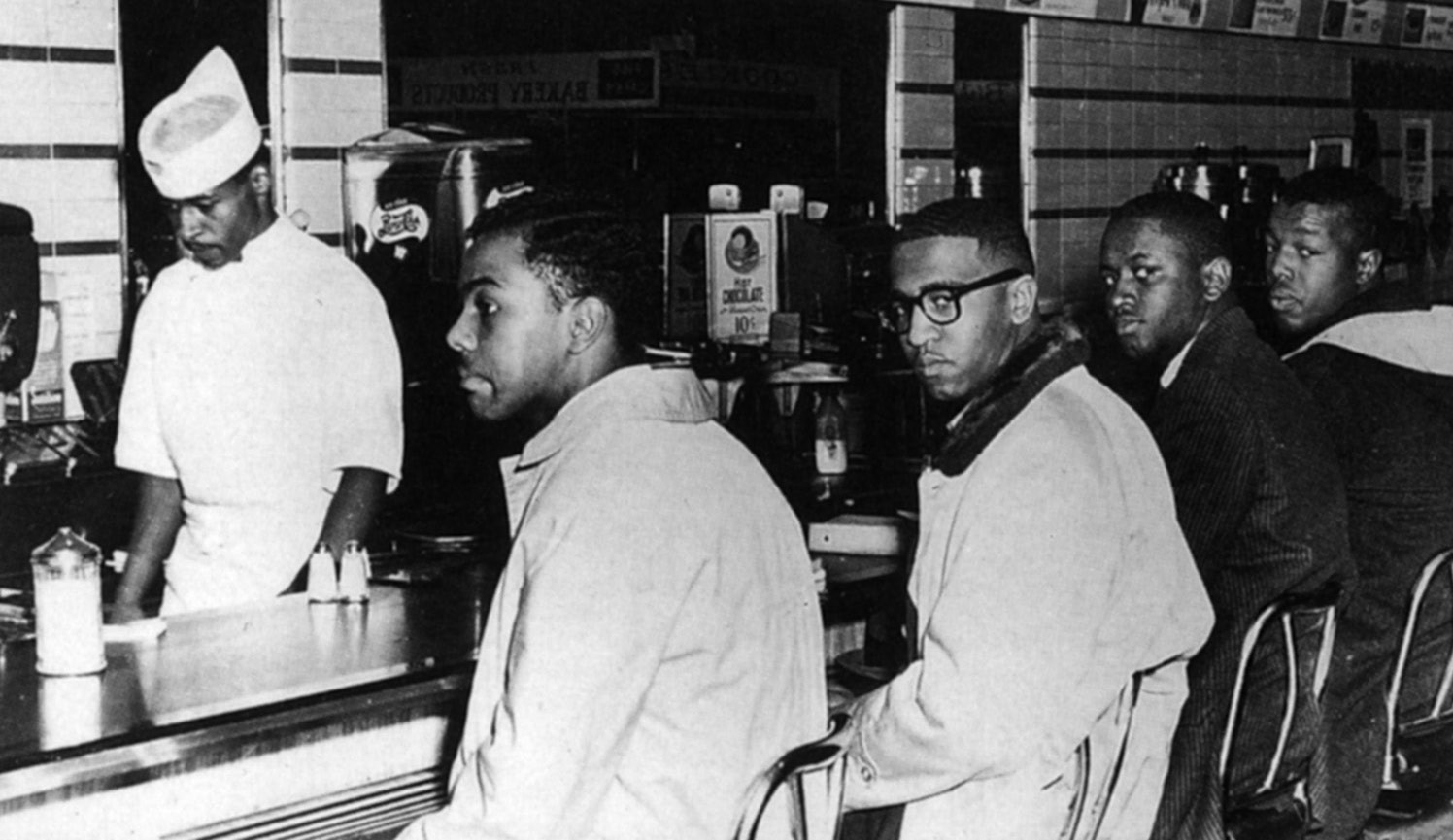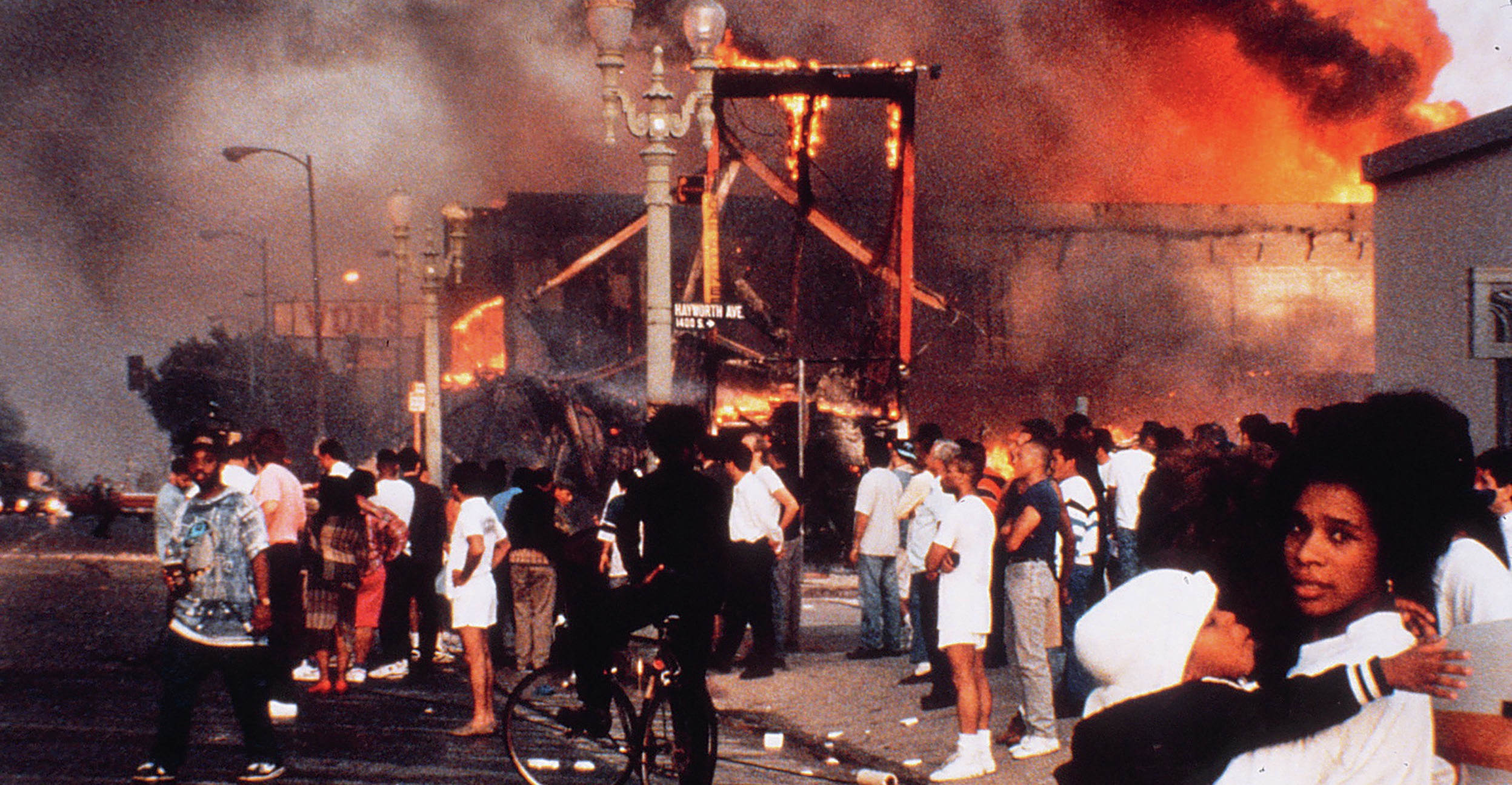The Black Lives Matter movement
This article maps the historical context of the Black Lives Matter movement in relation to US policing. It marks BLM as a transnational black liberation movement and discusses its use of social media, popular culture and intersectional activism

institutional racism Describes the ways that racism is upheld through the infrastructures of organisations and institutions.
In May and June 2020, in the midst of a global pandemic that disproportionately affected the black community, thousands of people gathered across UK cities as part of local Black Lives Matter (BLM) protests. These protests started in cities and states across the USA and then spread across the world. Despite the fear of public gatherings in the midst of the Covid-19 outbreak, people were determined to protest the existence of another virus, a pandemic that has plagued the black community for hundreds of years and has genetically mutated under the guise of policy and law. This virus is institutional racism and a climate of white supremacy, specifically that which takes the form of police brutality.
George Floyd and police brutality
While BLM protests have taken digital and physical forms since 2013, the 2020 protests were spurred on after George Floyd was murdered by Minneapolis police officer Derek Chauvin in May 2020. In a viral video that circulated social networking sites, Chauvin was shown to kneel on Floyd’s neck for almost nine minutes while Floyd called out for his life. His last words ‘I can’t breathe!’ were featured on placards during the marches.
UK protests
While Floyd’s murder signalled the start of these protests, the global protests and riots expressed frustration with ongoing incidents of racial violence that year, including the murder of 26-year-old Breonna Taylor who was killed by Louisiana police officers in her apartment as she slept. In the UK, these protests were used to challenge notions that police brutality and racial violence only existed in the USA. They were also used to highlight the ways that institutional racism violently impacts the lives of black people.
During these marches, placards called for justice for the death of 47-year-old Belly Mujinga, a railway worker who died from Covid-19 after being spat on by an infected individual at work, and 12-yearold Shukri Abdi who drowned in a Manchester river after experiencing bullying at school. These examples demonstrate how BLM not only protests against police brutality and racialised violence, but also demands policy change — crucial for all forms of black liberation and racial justice.
Origins
BLM is a decentralised grassroots protest movement. It gained traction as a viral hashtag #BlackLivesMatter on Twitter in July 2013 after the murderer of 17-yearold Trayvon Martin in Florida was acquitted. The hashtag was initially used to draw attention to the ways that the US criminal justice system has long abused the black community under the motto ‘protect and serve’. Founded by Alicia Garza, Patrisse Cullors, and Opal Tometi, #BlackLivesMatter quickly took on a life of its own. It was solidified as a protest movement in 2014 when demonstrations erupted across US cities in response to the murders of Eric Garner, Michael Brown, Tamir Rice, Laquan McDonald and others, see Box 1.
Policing in American history
Mapping the relationship between the US criminal justice system and the institution of slavery, #BlackLivesMatter recognises the ways that modern policing evolved from eighteenth-century slave patrols established to violently police the enslaved. Armed with guns and other weapons, both lowerclass and wealthy white men were enlisted to enforce curfews, capture escaped slaves and use terror to prevent slave gatherings. This form of organised policing was created in response to a widespread fear of slave uprisings after the population of enslaved African Americans grew. They were another means of exercising power over the enslaved to ensure they did not revolt.
In the later nineteenth century, Black Codes were enforced to restrict the freedom of the formerly enslaved. These codes were laws that maintained black people as second-class citizens, maintained the social order of slavery and threatened black people with flogging and arrest if these restrictive rules were not followed. They could be enforced by all white Americans but particularly by vigilante groups such as the Ku Klux Klan. The mutation of slave patrols throughout US history offers a context for understanding the ways that the modern police force is inextricably tied to its white supremacist predecessors.
Presently, black Americans are five times more likely to be incarcerated than white Americans. While black children represent 14 per cent of US children, they represent 42 per cent of children who are detained. Black women are twice as likely to be arrested than their white counterparts. These statistics demonstrate how black Americans are disproportionately policed and imprisoned. They also highlight how the US police force still remains tethered to earlier iterations of white supremacist state oppression and abuse.

Box 1 A global movement
The decentralisation of BLM has resulted in many global iterations of political demonstrations. Unlike the Civil Rights Movement, which was nationally led, BLM encourages transnational solidarity, global collaboration, and local community organising in the fight for black liberation.
Twentieth-century movements
The BLM movement extends a long history of black protest against the US police force and the criminal justice system. In these many iterations of protests, black people have used varying methods to object to police brutality.
In 1960, during the civil rights movement, Ella Baker founded the Student Nonviolent Coordinating Committee (SNCC), which came to represent the young Black voice of the movement. SNCC organised the first sit-in protest at white-only lunch counters at a local Woolworth’s in North Carolina. During these sit-ins they would request to be served at the counter and would wait quietly and patiently until they were. Their peaceful protest was frequently met with verbal and physical violence from aggressive white guests and the police who would remove, beat and arrest them.
SNCC’s sit-ins were designed to shed light on police brutality and the violence of white Americans. Relying on cameras and tape recorders, organisers felt that by taking a non-violent approach, they would reveal to the world how aggressive the white American community was in response to their peaceful protest and shed a stark light on the ways that police brutality operated.
decentralisation When local communities or offices take control over a movement or organisation rather than there being a single authoritative leader.
sit-ins Peaceful student protests which started in Greensboro in February 1960. By the summer of 1960, over 50,000 had participated across the country.
Rodney King After being stopped by police on March 3 1991, King was brutally beaten and three of the four officers responsible were acquitted. This verdict sparked the Los Angeles riots of 1992.
copwatching The practice of monitoring police interactions with the community to ensure no violence occurs.
open carry Visibly carrying a firearm in public.
The Black Panthers
The Oakland-based Black Panther Party (BPP), founded by Huey P. Newton and Bobby Seale in 1966, approached the long fight against police brutality differently. Angry with the ways that the police had continuously harmed the black community, the BPP sought armed self-defence as one of their liberation tactics. They believed that violence was inevitable and demanded ‘an IMMEDIATE end to police brutality and MURDER of black people.’
A key part of their strategy was to ‘police the police’ through copwatching. Taking advantage of the open carry laws in California, BPP members would form patrols and carry loaded guns across the city as a way to protect the black community from police harassment and violence. However, in 1967, fearful policymakers designed legislation to suppress this form of social protest in the form of the Mulford Act, which prohibited citizens from carrying loaded firearms in public.
Los Angeles riots
Despite these varying methods used to protest police brutality, it didn’t stop. The 1992 Los Angeles riots reflected a deep community frustration with the ways that the criminal justice system upheld police brutality and failed to protect black people. The riots, which injured 2,383 and resulted in the death of 63, took place in the spring and were a response to the acquittal of the four police officers who brutally beat Rodney King. Unknowingly filmed on camera, the footage showed the police officers violently beat King with batons and tasers, kicking him in his back and hogtying his legs before arresting him.
The riots were also a response to the murder of 15-year-old Latasha Harlins, who earlier that month was murdered by a Korean shop owner who accused her of stealing orange juice. The shop owner received probation and fined $500. The LA riots were a pivotal moment in the fight against police brutality and a corrupt criminal justice system.
Aims and demands
Committed to the fight against a climate of white supremacy, in 2015 Garza, Cullors and Tometi founded the Black Lives Matter Global Network Foundation. The network aims to ‘build local power to intervene in violence inflicted on black communities by the state and vigilantes’, and so they recognise that brutality is not always done by police, but also other citizens that has been enabled through US legislation.
One of the network’s current demands is a call to ‘Defund the police’. Rooted in the police abolitionist movement, ‘Defund the police’ is the call to disempower the US police force and redivert the funds to other community projects. It argues that the criminal justice system needs to be centred on reform and the use of community policing should be eradicated (see Box 2 for more information).

#SayHerName and #BlackTransLivesMatter
Despite the fact that BLM was started by three queer black women, the movement has been criticised for its erasure of black women, trans and queer narratives of anti-black violence. The hyper-visibility of black men’s narratives of state violence threatened to erase and silence the trauma experienced by black women and trans people.
In 2015, Sandra Bland was found dead in her jail cell after being arrested during a traffic stop. Shortly afterwards, the hashtags #SandraBland and #SayHerName were featured alongside #BlackLivesMatter to draw attention to the silence surrounding black women’s unlawful deaths in the larger movement. As an intervention, #SayHerName illustrates the ways that the erasure of black women’s narratives are shaped by misogynoir.
Similarly, at the 2020 protests, placards that read ‘Black Trans Lives Matter!’ and ‘All Black Lives Matter’ were increasingly used and in late June 2020 a Black Trans Lives Matter march took place in London. In response to #BlackLivesMatter, these aimed to highlight the silence surrounding the violence that the black trans community receive. They specifically drew attention to the murders of black trans women in recent years, including Dominique Fells and Riah Milton.
Collectively, these hashtags and marches highlight some intracommunity responses to BLM which challenge the dominant black masculinist framework. They demanded that attention be focused on the ways that racial violence also operates in conjunction with the overlap of one’s identity, including gender and sexuality. This focus on the ways that oppression and violence is shaped by the multiple facets of one’s identity is known as ‘intersectionality’.
Intersectional activism
The Black Lives Matter Network makes intersectionality one of its core values in the fight for black liberation. On the website it states: ‘our network centres those who have been marginalised within black liberation movements’ and lists gender, disability, citizenship and sexuality as examples of the ways that experiences of antiblack racism are entangled with other aspects of one’s identity. In doing so, they illustrate how the current liberation movement differs from previous movements which have centred and privileged the voices of black men. They centre intersectionality as a radical means to argue that black liberation can only be achieved when all black people are free.
When black women, trans, queer, disabled and undocumented people are left out of #BlackLivesMatter conversations, we see how privilege and power is wielded within the black community, and how white patriarchal heteronormative capitalist supremacy is upheld. Due to the decentralisation of the movement and the accessibility of social media, local communities and subgroups are able to use #BlackLivesMatter to have nuanced discussions about the ways that black liberation movements have been complicit in the marginalisation of some people within the black community. This offers new possibilities for radical black freedom.
Box 2 Police abolition
The police abolition movement argues that policing is fundamentally damaging to communities and should therefore be eradicated. Abolitionists argue that policing has its foundations in white supremacy and colonialism and so suggest that we must create alternatives to community policing.

Digital activism and popular culture
Social media was a key tool in the globalisation of the BLM movement. In the same way that televisions broadcast the civil rights movement, SNCC’s sit-ins and the beating of Rodney King, smartphones and their capacity to instantly video record, live stream footage and share resources immediately amplified the reach of Black Lives Matter and aided those on the ground during protests.
Celebrities have also helped to amplify the movement. For example, Beyoncé’s performance at the 2016 NFL Super Bowl and Colin Kaepernick’s kneel during the National Anthem at NFL games offer two examples of how celebrities have used their platforms to make visible the injustice faced by the black community. Collectively, social media activism and celebrity performances have helped to solidify the movement as a transnational activist movement.
misogynoir A specific form of prejudice against black women that is shaped by the intersection of their racial and gender identity.
intracommunity Describes the social networks within a community.
intersectionality Coined by black feminist Kimberlé Crenshaw, this term is a framework that illuminates how discrimination is experienced through the overlapping aspects of one’s identity.
transnational Refers to an organisation or ideology that crosses national borders.
BLM today
While BLM began as protests against police brutality in America, it has been essential in starting a global conversation about the ways that white supremacy and colonialism shape the structure of all institutions. The rapid digital circulation of and engagement with the movement have meant that it has reached other parts of transnational popular culture that previous protests have not. For example, NASCAR driver Bubba Wallace has announced that he will drive a car painted to represent the BLM movement, and in the Premier League, footballers were seen to wear BLM badges on their shirt. However, the high profile of BLM can also be attributed to the commercialisation and commodification of the movement by larger corporations.
Despite this, BLM takes seriously the ways that infrastructure, policy, law and media have restricted black freedom. As well as the criminal justice system, the movement is focused on environmental justice, spatial justice, healthcare and education in the quest for black liberation. Bringing together globally disparate black communities, BLM affirms the lives and humanity of all black people.
EXAM-STYLE QUESTIONS
1 Evaluate the use of social media in the BLM movement.
2 Discuss the strengths and limitations of ‘Defund the Police’, and suggest alternatives for state spending.
3 In what ways does BLM argue for intersectionality as a framework for activism?
4 How far do you agree that the emergence of digital technology has resulted in BLM being more successful in achieving its aims than the civil rights movement of the 1950s and 60s?
RESOURCES
Books
Lebron, Christopher J. (2018) The Making of Black Lives Matter: A Brief History of an Idea, Oxford University Press.
Rankine, C. (2014) Citizen: An American Lyric, Graywolf Press.
Online
“Black Trans Women Seek More Space in the Movement They Helped Start.” (2020) The New York Times: https://tinyurl.com/yhp5z8bj
Watch The 13th (2016) on Netflix. Find the official BLM website here: https://BlackLivesMatter.com





